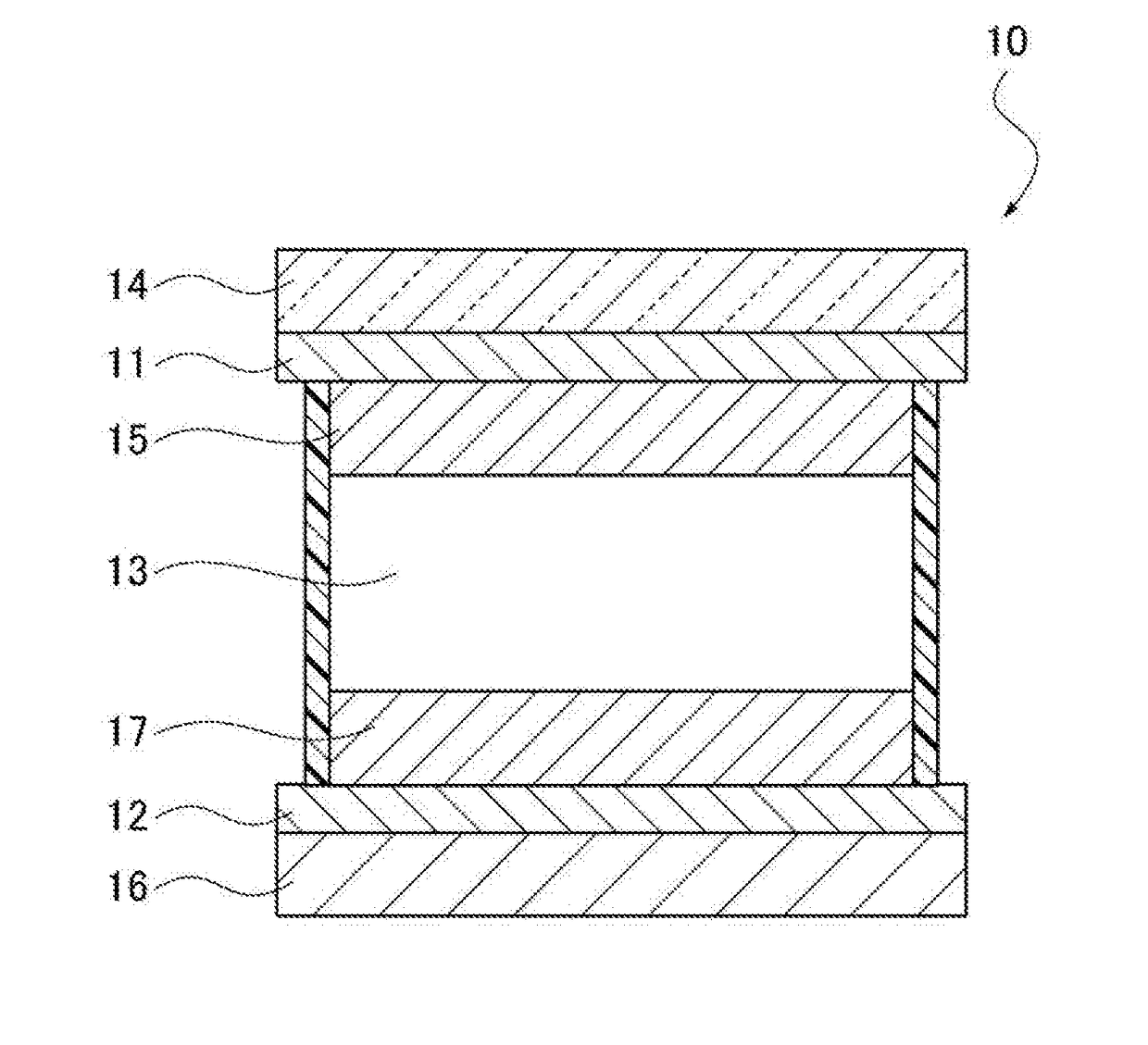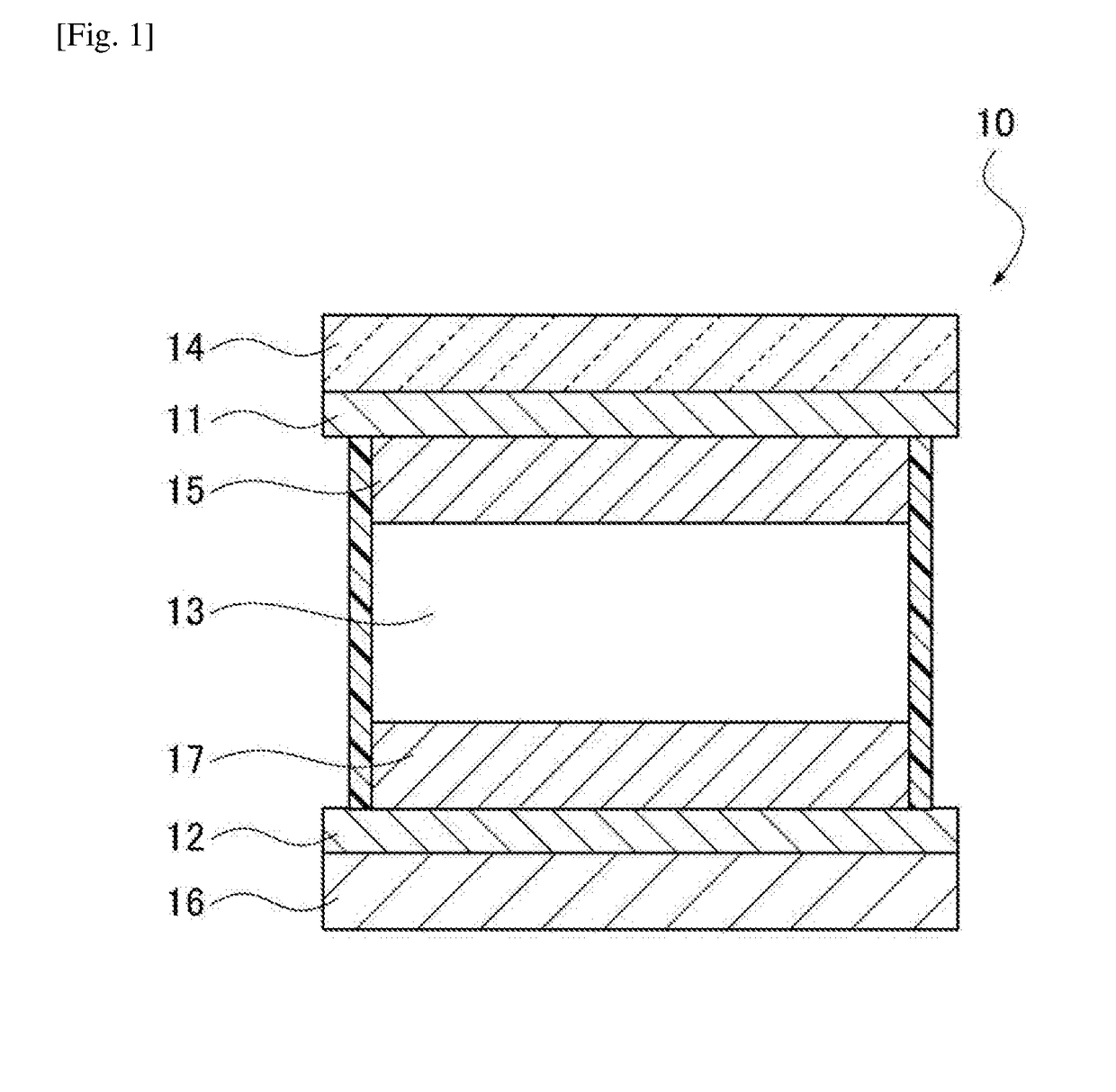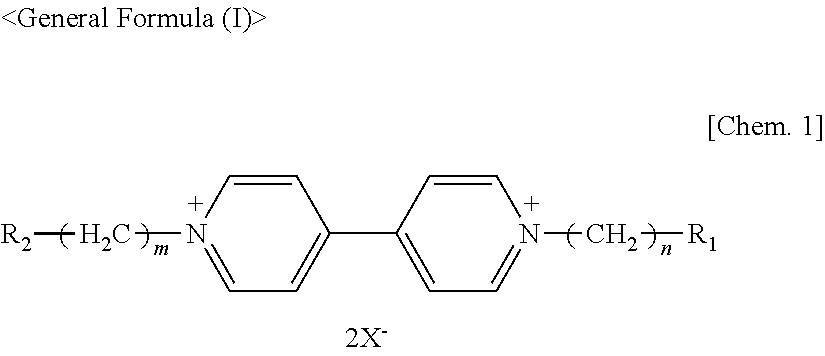Electrochromic element
- Summary
- Abstract
- Description
- Claims
- Application Information
AI Technical Summary
Benefits of technology
Problems solved by technology
Method used
Image
Examples
example 1
[0130]An example of production of an electrochromic element of Example 1 will now be described.
[0131]
[0132]A first electrochromic composition having the below-described composition was prepared in order to form a first electrochromic layer on a first electrode.
[0133][0134]Electrochromic compound 1 including monofunctional acrylate (Exemplary compound 1): 50 parts by mass[0135]IRGACURE 184 (available from BASF Japan Ltd.): 5 parts by mass[0136]PEG400 diacrylate including difunctional acrylate (hereinafter, referred to as “PEG400DA,” available from Nippon Kayaku Co., Ltd.): 50 parts by mass[0137]Methyl ethyl ketone: 900 parts by mass
[0138]Then, an ITO glass substrate (40 mm×40 mm, thickness: 0.7 mm, ITO film thickness: about 100 nm) serving as a first electrode was coated with the resultant first electrochromic composition by spin coating. The resultant coated film was irradiated with UV rays at 10 mW for 60 seconds by means of a UV irradiation device (SPOT CURE, available from USHIO ...
examples 2 to 39
[0173]Electrochromic elements of Examples 2 to 39 were produced in the same manner as in Example 1, except that the Electrochromic compound 1 represented by the Exemplary compound 1 was changed to the Electrochromic compound 1 represented by any of the Exemplary compounds 2 to 39 as presented in Table 1. The electrochromic elements of Examples 2 to 39 were evaluated in the same manner as in Examples 1 by the Tests 1, 2, and 3. Results are presented in Table 1.
examples 40 to 49
[0174]Electrochromic elements of Examples 40 to 49 were produced in the same manner as in Example 39, except that the Electrochromic compound 2 represented by the Exemplary compound A was changed to the Electrochromic compound 2 represented by any of the Exemplary compounds B to K as presented in Table 1. The electrochromic elements of Examples 40 to 49 were evaluated in the same manner as in Examples 1 by the Tests 1, 2, and 3. Results are presented in Table 1.
PUM
 Login to View More
Login to View More Abstract
Description
Claims
Application Information
 Login to View More
Login to View More - R&D
- Intellectual Property
- Life Sciences
- Materials
- Tech Scout
- Unparalleled Data Quality
- Higher Quality Content
- 60% Fewer Hallucinations
Browse by: Latest US Patents, China's latest patents, Technical Efficacy Thesaurus, Application Domain, Technology Topic, Popular Technical Reports.
© 2025 PatSnap. All rights reserved.Legal|Privacy policy|Modern Slavery Act Transparency Statement|Sitemap|About US| Contact US: help@patsnap.com



